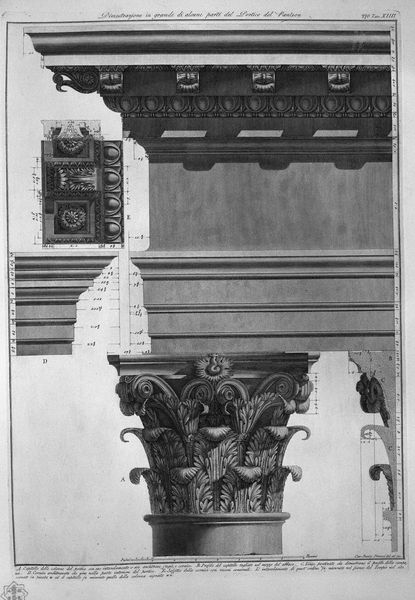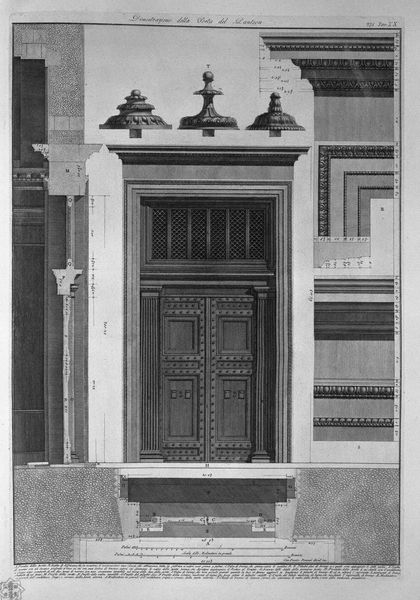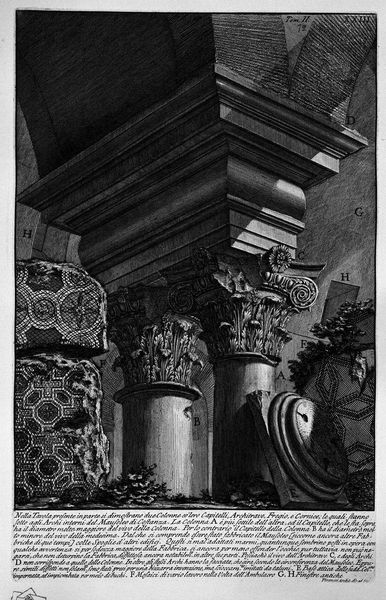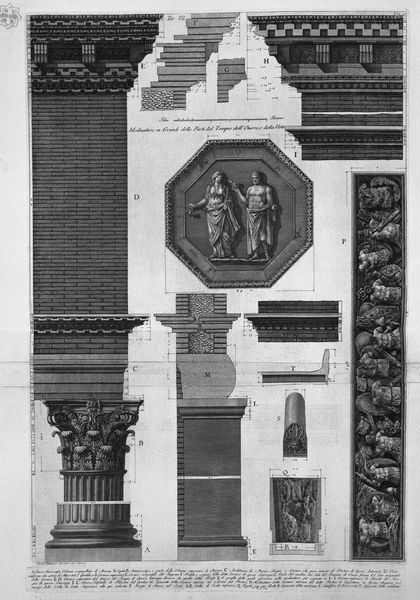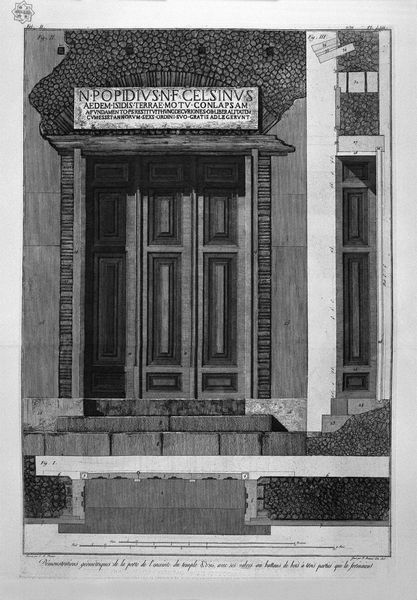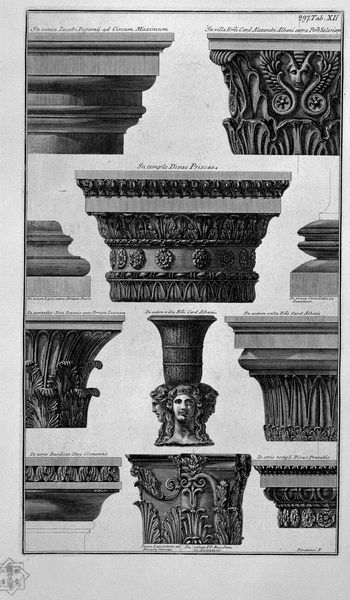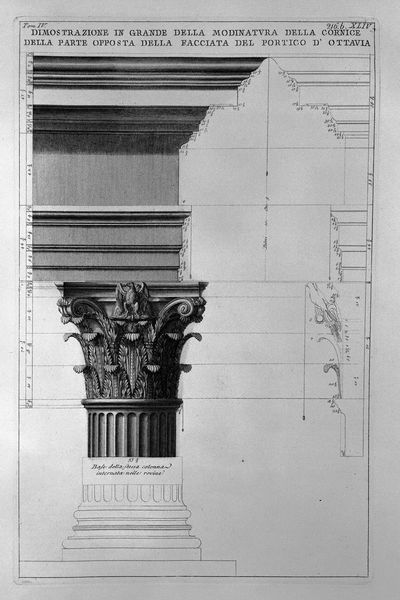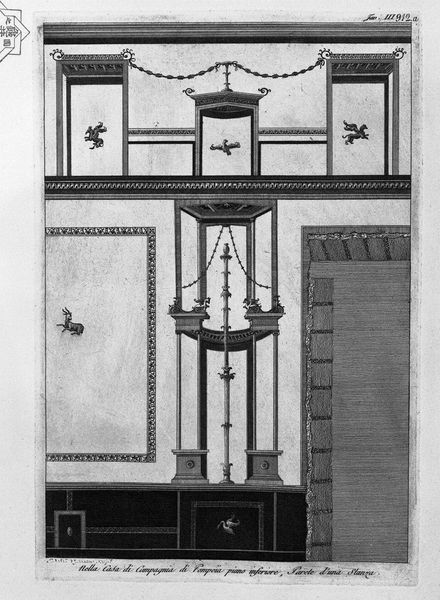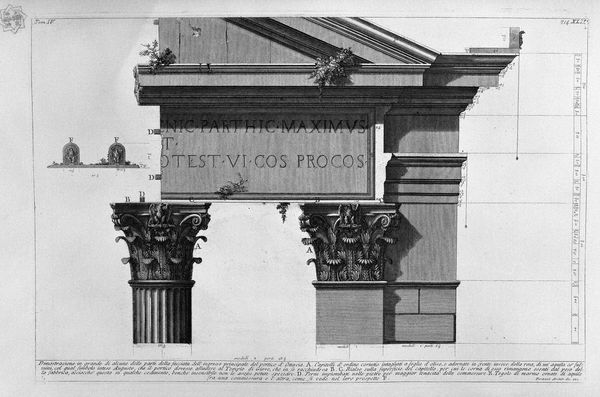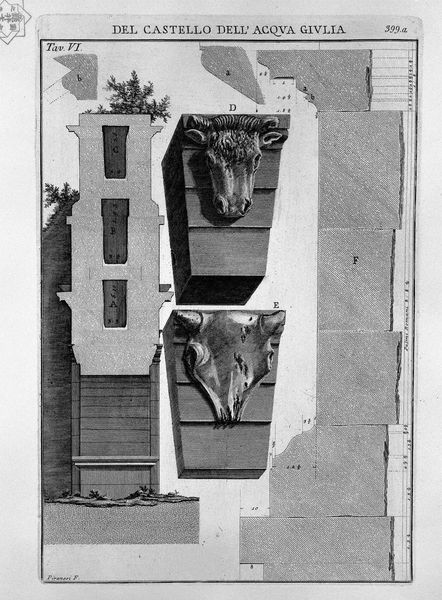
drawing, engraving, architecture
#
architectural sketch
#
drawing
#
architectural landscape
#
architectural design
#
architecture influence
#
traditional architecture
#
romanesque
#
architectural concept
#
geometric
#
column
#
arch
#
architectural drawing
#
line
#
architecture drawing
#
architectural proposal
#
exterior design
#
engraving
#
architecture
Copyright: Public domain
Editor: This engraving, "Demonstration in Large Parts of the Interior of the Pantheon," is by Giovanni Battista Piranesi. The detailed linework really draws my eye – it feels incredibly precise, like a technical blueprint, yet also artistic. What do you make of it? Curator: Well, for me, it's crucial to consider the socio-economic conditions that enabled Piranesi to create such detailed engravings. Engravings like this served a vital purpose. These weren’t just aesthetic objects but were commodities. They acted as blueprints and records, allowing builders to replicate the grandeur of Roman architecture. It’s a dialogue between art and industry, high culture and the labor needed to produce it. Editor: That makes a lot of sense. So, it was about democratizing classical design, in a way? Curator: Precisely! Consider the paper, the ink, the labor involved in the engraving process itself. Each line represents human effort, the repetitive, almost industrial task of carving into a plate. These engravings democratized classical design. Does seeing it as reproducible design, produced within a commercial framework, change how you perceive its aesthetic qualities? Editor: It does. I was so focused on the artistry of the lines, I hadn't fully considered the material implications – the act of production and its audience. Curator: Exactly. By focusing on these details, we shift our understanding away from just high art to seeing this as part of a wider material culture, shaped by processes and consumption. It gives insight into how design traveled and influenced societies. Editor: It’s like revealing the usually hidden machinery behind a beautiful facade. I'll never see engravings quite the same way! Curator: Indeed, appreciating the hands that shape an idea is as important as admiring the idea itself.
Comments
No comments
Be the first to comment and join the conversation on the ultimate creative platform.

